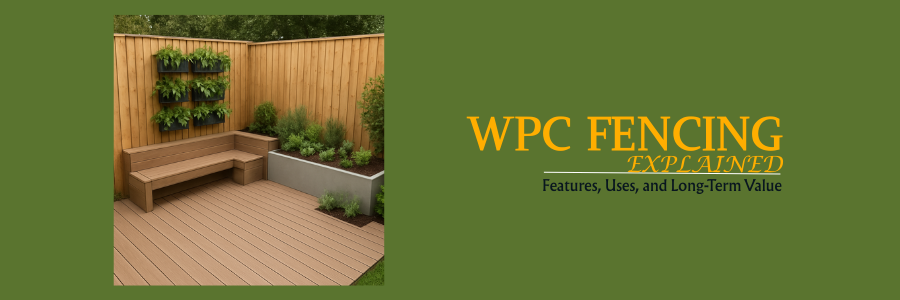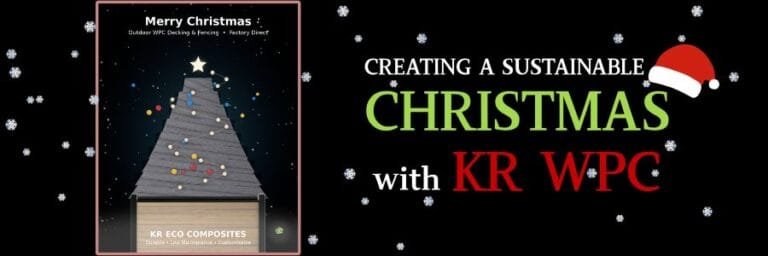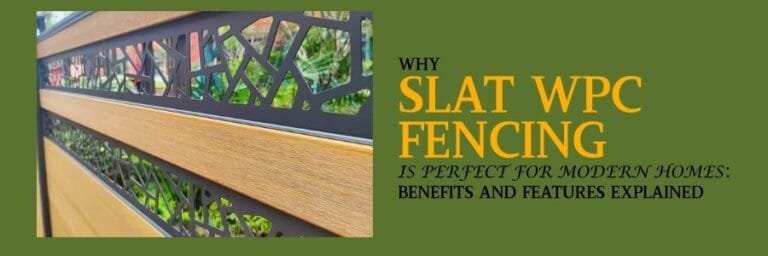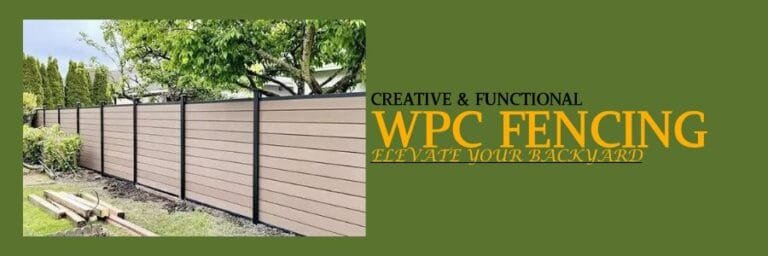“Good Fences Make Good Neighbors” is a deeply ingrained belief of Western civilization. It was poetically said by Robert Frost in his poem “Mending Wall”, highlighting the importance of fences in maintaining personal space and healthy social relationships. Fences that originated from the use of stones as far back as 4000 BCE have evolved into their modern, long-lasting, and reliable form, utilizing WPC (wood plastic composite) material.
WPC fences are gaining attention primarily due to their low maintenance, lightweight, robust, and versatile uses. They offer tons of features that other fence materials lack. A WPC fence can save hundreds and even thousands of dollars on fencing in the long term. This post will explain why WPC is the go-to hybrid material for modern fencing, what its core features are, how to use a WPC fence, installation tips, and the eco-friendly nature of the material. Let’s begin the guide!
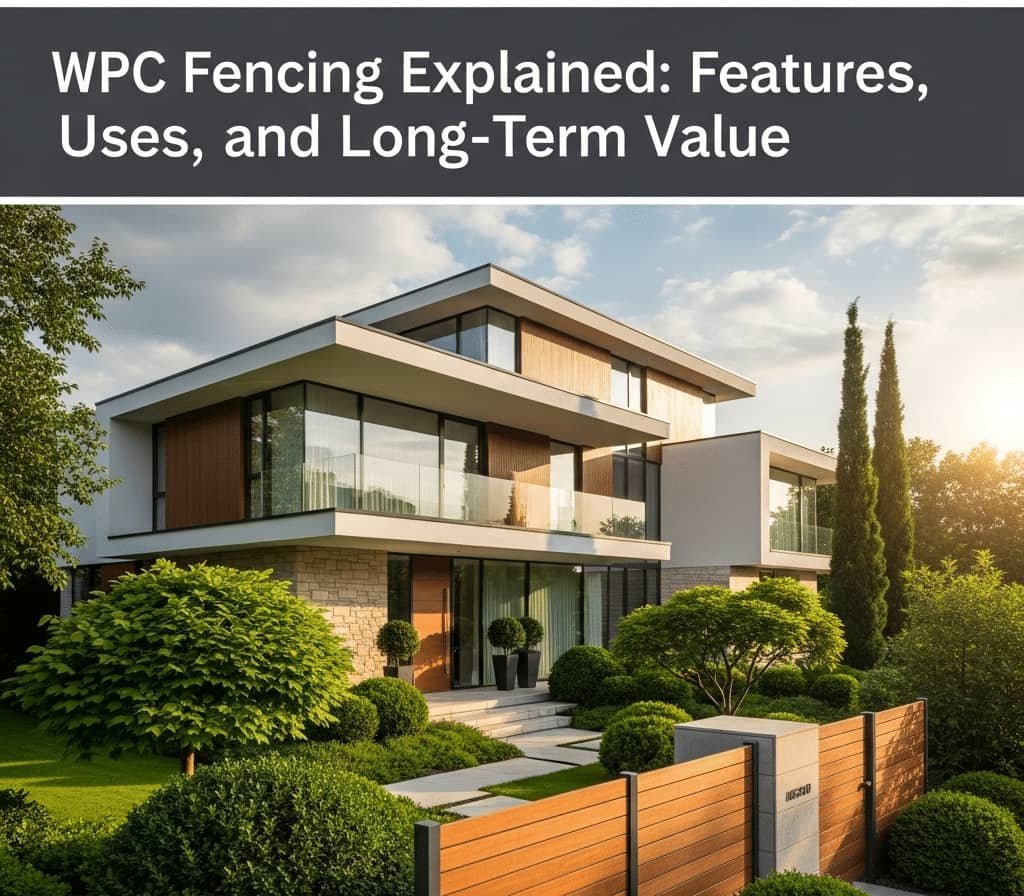
1. Why WPC Is Changing the Game in Modern Fencing
The constant effort to find sustainable solutions for every aspect of life is forcing industries to adopt innovative solutions, and WPC fences are no exception. WPC is a hybrid material that uses sawdust and thermoplastics, and some additives to create a fence that can last as long as 20 years. Moreover, they mimic real wood by providing a similar grain structure and 3D-embossing.
WPC Composition
The wood plastic composite (WPC) is a combination of materials. It combines the benefits of all the materials. Here are its key ingredients:
- Wood Fiber: Yes, WPC does contain actual wood fibers, which make up around 60% of a WPC fence. The addition of wood not only gives strength to the fence but also adds its warmth.
- Thermoplastics: Using 30% High-Density Polyethylene (HDPE) helps bind together all their ingredients. It makes the WPC panel durable, water-resistant, and low-maintenance.
- Additives: 10% chemical additives
Innovation in WPC Material
There are mainly two generations of WPC material: 1st generation with its simpler design. Whereas the latest design offers the warmth of wood and combines it with low-maintenance thermoplastics. Let’s dive deeper and compare these two WPC material technologies, so that we know what we are buying:
| Feature | 1st Generation WPC Fence | Coextruded WPC Fence |
| Material Composition | Wood fibers mixed with plastic (e.g., PE or PVC) | Wood fibers capped with a protective plastic layer |
| Surface Finish | Exposed surface without additional protection | The coextrusion layer provides added protection |
| Durability | 5-7 years | 15-20 years |
| Maintenance | Requires regular maintenance (painting, sealing) | Low maintenance, no painting or sealing required |
| 3D Embossing | Not commonly offered or less detailed | Often available, providing more realistic 3D textures and depth |
| Resistance to Weather | Less resistant to UV rays, water, and mold | High resistance to UV rays, water, and mold |
| Cost | $10 – $20 per linear foot (approx) | $20 – $35 per linear foot (approx) |
As we can see, the coextruded WPC fence is the latest and most superior technology. The additional layer of thermoplastic combines the beauty of wood with the durability of plastic, featuring 3D-embossing.
2. Core Features That Set WPC Fencing Apart
Fencing can be done using Wood, PVC, Aluminum, Steel, Bamboo, Concrete, or Stone. What sets WPC fencing apart from others is its low maintenance, combined with sustaining aesthetics:
Durability and Weather Resistance
The unique formulation of WPC gives it the advantage of resisting moisture. Each of the wood dust/fibre inside the WPC fence material is protected by a polymer. The chances of water reaching the wood material are highly unlikely, which increases the WPC fence’s life. Moreover, there is also no chance for fungus or insects to cause rotting. Each of these organic compounds is completely sealed and protected, preventing the kind of decay and rot that are common issues with traditional wood fences.
Aesthetic Appeal and Versatile Finishes
WPC fencing, alongside durability, offers premium aesthetics that are sure to turn heads. A fence that is shaped and offers a modern, contemporary addition to the character of the house, instead of just an uncomfortable and visually heavy privacy shield. Utilizing the natural wood look that is 3D-embossed onto the WPC fence board can add warmth and depth to its design. Brands like KR WPC offer tons of colors and texture options:
Colors
- Charcoal
- Oak Brown
- Golden Oak
- Red Leaf
- Birch Grey
- Other Customizable Colors
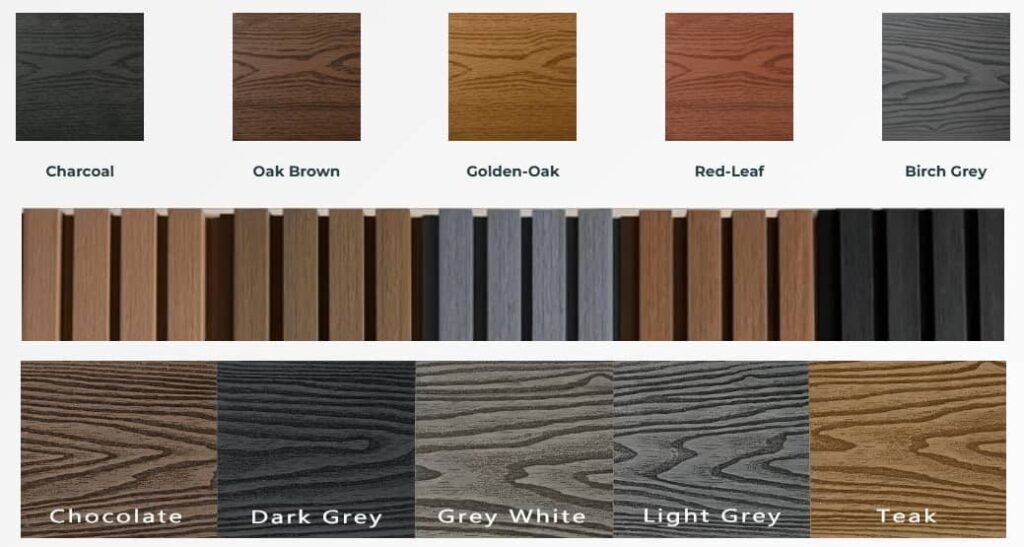
Textures and Design
- Slat Fence Panel
- 2D Wood Grain Fence Panel
- 3D Embossed Fence Panel
- Grooved Fence Board
- Semi-Privacy Fence Panel
- Deep Wood Grain Fence
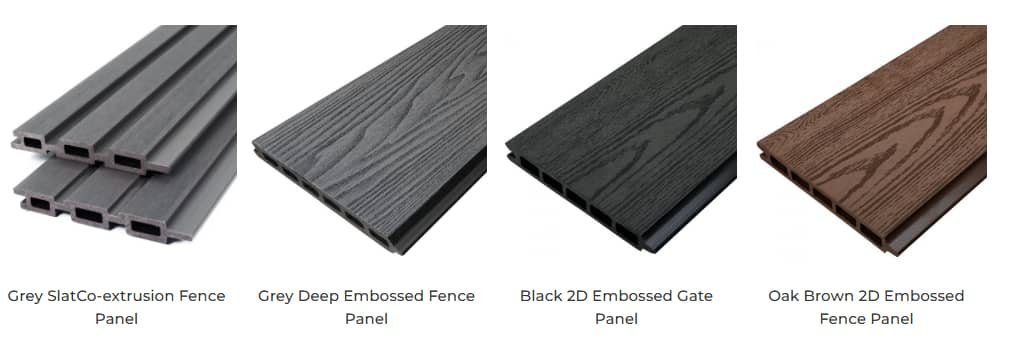
Maintenance-Free Living
The latest coextrusion WPC fencing requires no painting to protect it from moisture and rain. Moreover, there is no need for staining and sealing like wood. The outer layer of the WPC fence protects the wood particles from absorbing moisture and rotting. Another big advantage of the outer layer is protection against UV light. It allows the inner material to retain its strength over 20 years without any need for maintenance except just washing with a garden hose.
3. Where and How to Use WPC Fencing
WPC fencing can provide long-term value across multiple applications. Owing to their versatility in design and extraordinary durability, they can blend in with any usage scenario.
● Residential Applications
Drawing fences around houses on paper as a child exhibits how deeply ingrained our desire for privacy and sense of security is. WPC fences serve as a visual barrier in residential areas, providing protection for gardens, poolside barriers, pet enclosures, and more. Each of these spaces can utilize a wood plastic composite board to create a comfortable space.
● Commercial and Public Spaces
Fences in high-traffic areas where there are chances of wear and tear need to be robust. It should maintain its overall aesthetics while meeting its purpose of defining boundaries with minimal upkeep. These commercial and public spaces can be parks, schools, or business properties. They can have fences with different lengths and heights to suit their specific needs. School playgrounds will use shorter WPC fence while businesses might opt for a taller fence for tighter security.
● Smart Design Considerations
One of the key aspects that makes WPC fencing convenient and robust for use in any application is its modular design, wind-resistant post anchoring, and height customization. Manufacturers like KR WPC offer tons of features that make their products unique and smart. Here are some examples:
- Fencing Post and Cap: The modular fence series provides posts and post caps that are designed to work with WPC composite fence panels, allowing for flexibility in customization.
- Post Support and Metal Base: The posts are anchored with a metal base support system. This provides additional strength and stability to the fence, ensuring it remains secure under windy conditions.
- Customizable Fence Panel Sizes: KR WPC offers panels that can be adjusted for different heights. There is a standard 6ft x 6ft (183cm x 183cm) configuration. The panels can be tailored to fit specific project requirements.

4. Installation and Longevity Tips
WPC fences that come with an installation system for convenience take less time to set up and offer a more robust build. The fence panels will offer a longer life and greater impact resistance. Let’s analyze how some manufacturer incorporate installation systems in their design and how we can prolong the life of the WPC fence:
Installing WPC Fence Panels Efficiently
Manufacturers that consider installation come with the following systems:
- Pre-drilled Systems: Pre-drilled holes to facilitate screws and fasteners to secure the fence to the post effectively and efficiently.
- Interlocking Panels: Panels interlock with each other through the use of intelligent design. There is no need to use fasteners amongst adjacent panels.
- Screw-fixed Methods: The post and fence board come with aligned holes for screwing in for fastening. As the screws are easily removable, it offers easy assembly and disassembly.
How to Extend the Life of Your Fence
Fencing can be expensive, but preserving it through a few techniques and regular maintenance can extend its life. Consider these tips:
- Cleaning: The latest generation of WPC fence does not require any special chemicals for cleaning. A simple and mild detergent is enough to clean the fences.
- Drainage: Rain, gardening water, and poolside splashes can find their way to the post anchorage points and cause damage. Therefore, it’s vital to ensure that there are no points for water to take hold or stay by ensuring that the drains.
- Prevent Impact Damage: Impacts such as lawnmowers, heavy equipment, or even car doors can cause scratches or dents in the outer layer. It can cause water to seep into wood particles, causing damage. Prevent impacts to extend their life.
5. Sustainability
The ever-growing danger of pollution and overutilization of resources is pushing organizations and governments to push sustainable solutions. It means that any regulation can come at any time, which can make older fencing material obsolete. Let’s understand why WPC fencing favors sustainability:
Recycled and Recyclable
It uses wood sand that is typically a byproduct of other wood processes. WPC then combines the wood sand with plastics to produce a fully recyclable material at the end of life.
Eco-Certifications and Manufacturing Standards
Having proper manufacturing standards and eco-certifications can authenticate a product’s longevity. High-end manufacturers like KR WPC offer a wide range of certifications and follow manufacturing standards to the highest degree. Here is a showcase of their quality:
- ISO 9001: Quality Management Systems
- ISO 14001: Environmental Management Systems
- FSC® Certification: Forest Stewardship Council®
- CE Marking: Conformité Européenne
- SGS Certification: SGS Group Certification
- China Environmental Labelling Product Certificate: Chinese Environmental Certification
FAQ
- Is WPC fencing suitable for both residential and commercial use?
Fencing is an integral part of both residential houses and commercial setups. It provides safety and privacy. WPC is the most suitable material that ensures long-term value through durability, low maintenance, and aesthetic versatility.
- How long does a WPC fence last compared to wood or vinyl?
There are different grades, qualities, and material compositions for these materials, but the typical lasting time span for premium grades is: 15-20years for natural wood, 20-30years for high-grade vinyl, and 25-50 years for a WPC fence.
- Is WPC fencing waterproof and UV-resistant?
Yes, WPC fencing is waterproof and UV-resistant. The latest co-extrusion technology enables them to exhibit these properties with precision. This dual protection prevents the inner wood fibers from absorbing moisture and ensures the fence’s color remains vibrant for years.
- Are there color and style options for WPC fence panels?
Yes, the latest WPC fences, such as the coextrusion design from KR WPC, offer various colors, including charcoal, oak brown, and grey, as well as designs like slat, 2D wood grain, 3D embossed, and grooved panels.
- What makes KR WPC fencing different from other WPC manufacturers?
KR WPC stands out mainly due to its massive variety in colors and designs. They also offer extensive certifications and adherence to international standards like ISO 9001 and FSC. Their smart design considerations, such as wind-resistant post anchoring, modular design, low-maintenance panels, and a long lifespan, make their WPC fencing a premium grade.

